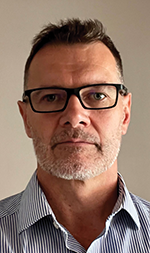
This year, APC celebrates 40 years since introducing its first milestone UPS in 1984. This original model, the 750, used a lead-acid battery to provide surge protection and backup power for PCs, LANs and workstations. However, due to its high development cost, it did not sell as well as anticipated, according to Emanuel ‘Manny’ Landsman, who also co-founded the company in 1981.
But APC made hay while the sun shone, and quickly replaced the 750 with the 450AT+, which used a non-sinusoidal waveform and delivered 200 watts. It was smaller and cheaper than the 750 and developed in just one weekend by co-founder Neil Rasmussen. This new product, the Back-UPS, became the foundation for APC’s growth. “I came in to work on Monday, and he had a little breadboard built on a piece of wood, and the damn thing worked,” Landsman said. “It took the price way down from the overpowered sine wave one, and we started selling the Back-UPS, the product that became the foundation for APC.”

The APC UPS has come a long way since then, with continuous innovation. It plays an increasingly critical role in keeping IT operations up and running, and it is becoming even more critical as pressures on IT infrastructure intensify. Schneider Electric also saw the value of this technology and acquired APC in 2007.
Today, data centre and IT managers must meet enormous data demands. Global data centre growth is predicted to double from 212,53 billion in 2023 to 437,33 billion in 2030, driving the demand for power and power protection. Here are three market trends driving the need for resilient IT infrastructure supported by UPS technology.
AI drives data centre demand
The growing use of AI across industries, from healthcare to logistics, is putting immense pressure on IT infrastructure. AI requires massive data processing capabilities, leading to increased demand for data centre computing capacity and power. Goldman Sachs forecasts a 160% growth in data centre power demand by 2030.
As AI applications become integral to business functions, unplanned downtime could cause major disruptions, such as in operating rooms, traffic systems or navigational tools. UPS systems ensure that critical infrastructure remains operational, even during power outages.
The sustainability challenge
The increasing demand for power comes when IT and data centre managers face pressure to decarbonise operations. According to the International Energy Agency (IEA), global power consumption by data centres is expected to exceed 1,000 TWh by 2026. This trend is pushing operators to seek solutions that better manage consumption, including renewable energy sources and energy-efficient equipment.
UPS technology plays a crucial role in sustainability efforts, with newer models having a smaller carbon footprint due to improved energy efficiency and the use of recycled materials. Furthermore, some UPS models allow for replacing power and battery modules without replacing the whole unit, and lithium-ion batteries provide longer life with reduced maintenance costs. These features help make infrastructure more resilient and support sustainability goals.
Edge computing growth accelerates
With the rise of AI, automation and other technologies, demand for real-time data processing is increasing, driving the need for edge computing. IDC predicts worldwide spending on edge computing will reach $232 billion by the end of 2024, up 15,4% from 2023. Edge networks are usually part of hybrid IT environments used by about 80% of organisations. and this places data processing closer to data sources and devices, supporting real-time critical applications. As a result, edge sites require the same power protection as larger data centres, including remote monitoring and management capabilities available in some UPS models.
Reliable power for a resilient digital future
Data centre and IT managers face immense pressure to meet market demands, but partnering with vendors like Schneider Electric can help. Schneider Electric has a global network of around 150 000 partners, who use our UPS solutions and technologies to support customer environments worldwide. These partners leverage remote monitoring and data analytics to manage and secure distributed, hybrid infrastructures.
Security is increasingly important in a data-driven world, and UPS network connectivity helps implement physical and cybersecurity measures to protect infrastructure investments. Here, UPS network connectivity helps organisations implement physical and cybersecurity controls to protect their infrastructure investments and gain peace of mind. In addition, this DCIM technology can also boost sustainability efforts.
Schneider Electric continues to invest in eco-friendly technologies as power outages become more frequent and prolonged. The company remains committed to delivering reliable, secure and sustainable power, supporting organisations as they adapt to new technologies and continue their digital journeys.
| Tel: | +27 11 254 6400 |
| Email: | [email protected] |
| www: | www.se.com/za/en/ |
| Articles: | More information and articles about Schneider Electric South Africa |
© Technews Publishing (Pty) Ltd | All Rights Reserved